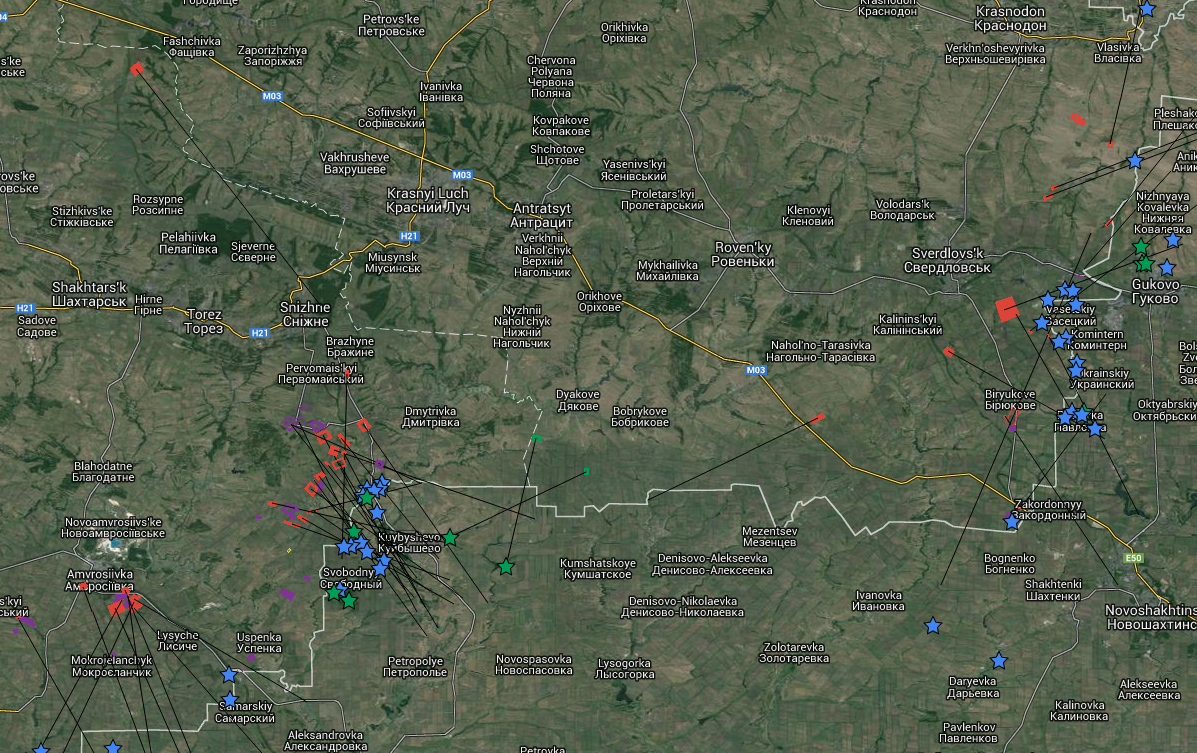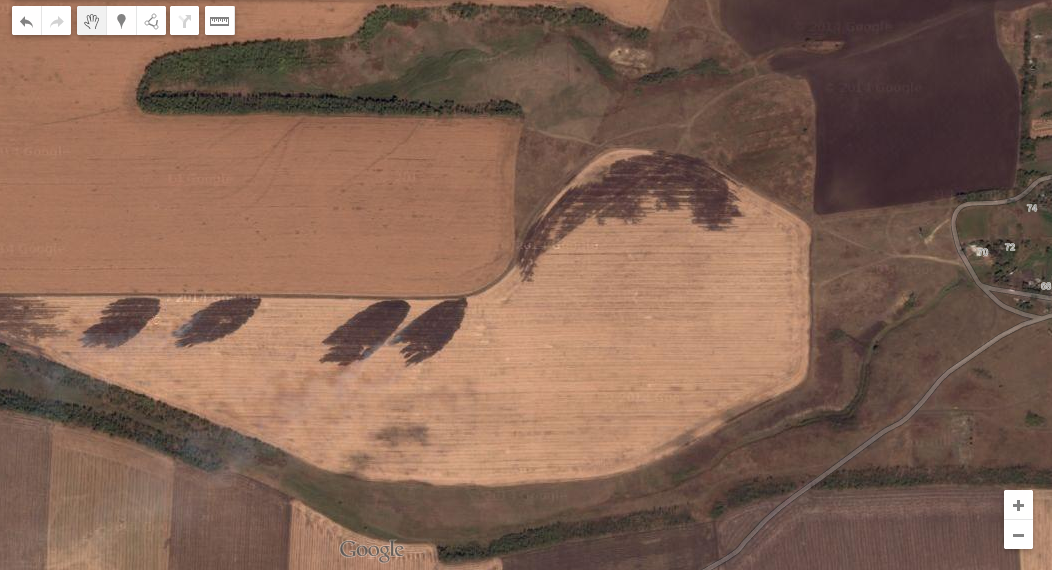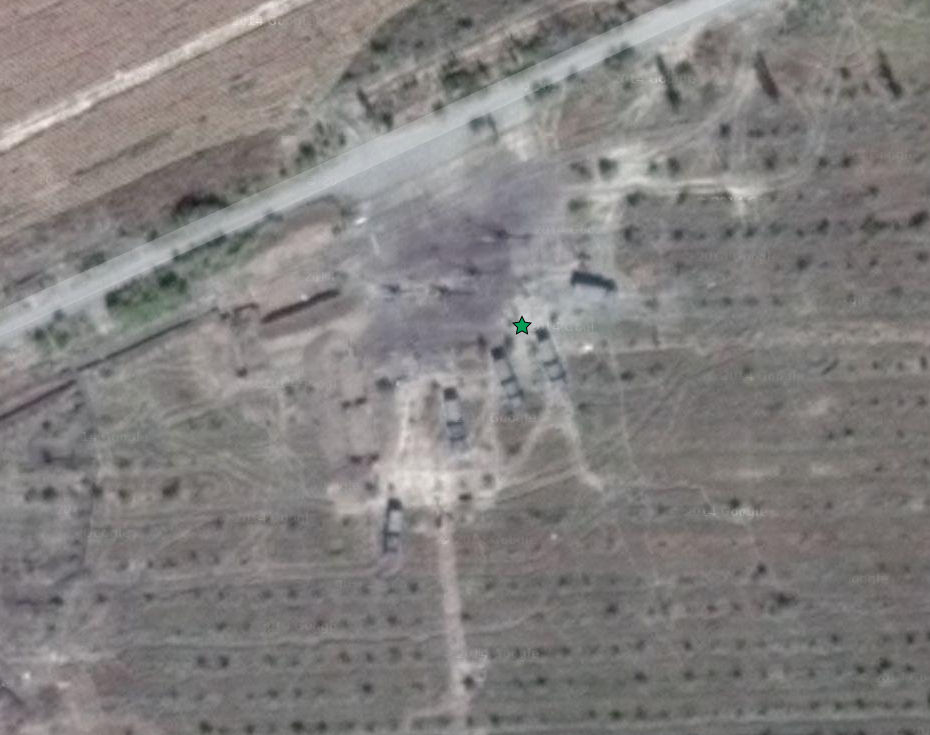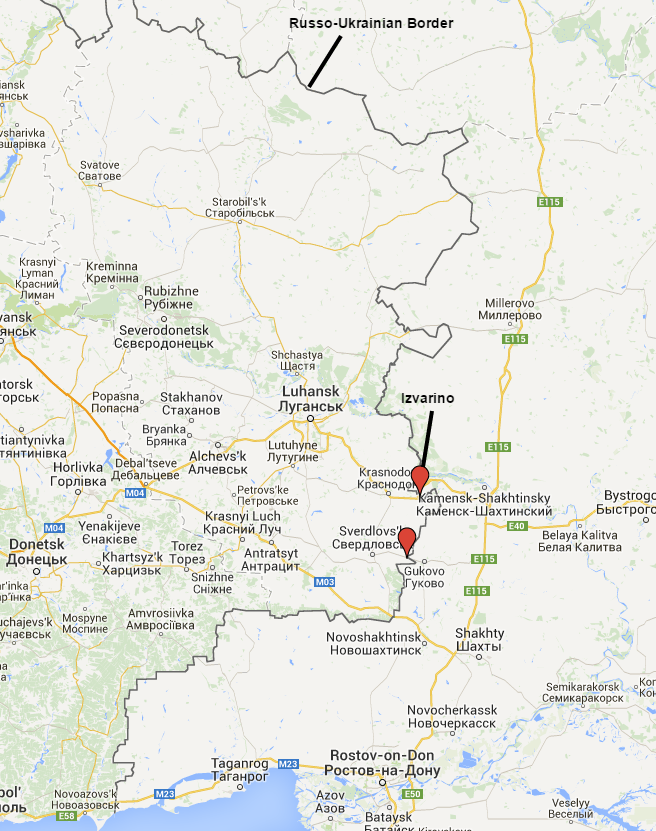Yesterday’s live coverage of the Ukraine conflict can be found here. An archive of our liveblogs can be found here. For an overview and analysis of this developing story see our latest podcast.
Please help The Interpreter to continue providing this valuable information service by making a donation towards our costs.
View Ukraine: April, 2014 in a larger map
For links to individual updates click on the timestamps.
For the latest summary of evidence surrounding the shooting down of flight MH17 see our separate article: Evidence Review: Who Shot Down MH17?
Below we will be making regular updates so check back often.
Yesterday there was a confusing story about new regulations concerning journalists visiting eastern Ukraine. After a series of announcements from different officials, each speaking to different sets of journalists, reports began to surface that the Ukrainian government was both easing and increasing restrictions on journalists. Yesterday, Kyiv Post led with this story about new proposed restrictions on field journalists:
The military claimed the new measure was imposed after the intelligence reported about “hunt” opened by separatists for Ukrainian journalists.
Dmytrashkivsky told the Kyiv Post on phone on Dec. 2 that the army just wanted to make the work of journalists, who report from Ukrainian side of frontline, safer. But as the journalists didn’t like the new measure he proposed his commanders to lift it.
“We just wanted to protect you, but it’s up to you if you don’t care about your safety,” Dmytrashkivsky said.
The statement said the new measure was taken in order to protect journalists and that intelligence indicated Russian-backed separatists were “hunting” Ukrainian journalists. The new restrictions, however, also apply to foreign journalists.
Today Kyiv Post notes that the restrictions have been lifted.
But now there is a new controversy, the creation of a new “Ministry of Information” which some are calling the “Ministry of Truth,” and journalists are not happy.
Reporters Without Borders released this statement:
An information ministry has been included in the proposed new government. Its creation, against the backdrop of an information war with Russia, has surprised journalists and media freedom organizations, which were not consulted.
“Putting the government in charge of ‘information policy’ would be major retrograde step that would open the way to grave excesses,” Reporters Without Borders secretary-general Christophe Deloire said.
“In a democratic society, the media should not be regulated by the government. The creation of an information ministry is the worst of all possible responses to the serious challenges that the government is facing.”
Media independence and media freedom are the best weapons against propaganda. Enlisting journalists in a government-managed information war would just undermine the public’s confidence in the national media. Reporters Without Borders urges Ukraine’s parliamentarians to oppose this proposal.
And Hromadske TV, a Ukrainian channel dedicated to telling the truth and countering Russian disinformation, is also not pleased:
Nikolai Holmov writes:
A new “Ministry of Information Policy” seems destined to be born – the reason/excuse for which, is to apparently to confront Kremlin propaganda – be it disinformation, misinformation, agitprop etc. What it infers, however, is forthcoming governmental manipulation, management and control of thus far freely accessed information.
Even war with the Kremlin is no excuse for what is a proposed ministry that will undoubtedly be misused when under the control of somebody loyal to one or another oligarch/politician. The same oligarchs/politicians that own most Ukrainian media between them. (Smart money would have Yuri Stets, godparent to one of President Poroshenko’s children, as front-runner to lead this potential abomination of an entity.)
Perhaps even worse, the slippery slope from a “Ministry of Information Policy” to a far more Orwellian “Ministry of Truth” is simply something all too tempting for those who remain at the pinnacle of Ukrainian political and business life – and containing the new Ministry of Information Policy to the issue of the Kremlin’s war may become a loose concept.
Questions of loyalty to whom, of eventual mission creep, and necessity for such a ministry at all, need be asked. The red flags of democracy are surely raised by the prospect of a Ministry of Information Policy that can easily morph into a Ministry of Truth”. It is nothing short of a disaster for the nation should this monstrosity be given life by the State.
We’ve seen the Ukrainian government struggle with issues like this before. The reality is that Western democracy is a revolutionary concept in Ukraine, the Ukrainian government is under constant siege not only by Russian Grad rockets and armor but also by Russian disinformation campaigns, and the Ukrainian government has a tendency to be reactionary as a result.
In the streets, however, many who supported the Euromaidan revolution are decrying these latest actions. Yesterday’s changes in press rules were quickly dropped. It’s not clear what will happen to this new idea.
In the meantime, a quick Google search shows that Russian state-operated propaganda channels are all reporting about Ukraine’s newest ministry.
— James Miller
Sean Case, a blogger writing from Denmark, has produced a detailed (though in his words, still “interim”) report on evidence of cross-border shelling visible on Google Maps satellite images.
Cross-border attacks from Russia into Ukraine have been documented before, but this is the largest analysis of open-source material we have seen so far.
The report, entitled Smoking GRADs: Google map satellite images reveal almost 40 artillery attacks from Russia to Ukraine, is available to read in full here.

Case identifies not only impact sites, but proposes likely launch sites, many of them marked by clear burn marks in the grass or even suspicious vehicles parked nearby.


Case has cross-referenced media reports of cross-border shelling with visible evidence on Google Maps. He writes that 56 of 127 attacks reported by the Ukrainian National Security and Defence Council and the Ukrainian State Border Guard Service can be correlated with visible signs of shelling on Google’s satellite imagery.
Case’s methodology for identifying impact marks and the likely trajectory of the shells that created them is discussed in an appendix here.
The full interactive map is available here.
— Pierre Vaux
Ukrainska Pravda reports that the Verkhovna Rada has approved President Poroshenko’s nominations for the posts of foreign and defence ministers, Pavlo Klimkin and Stepan Poltorak.
Earlier today, it was reported that Poroshenko had nominated both men to continue their posts in the Cabinet of Ministers.
Klimkin was approved by 351 votes, Poltorak by 347.
Klimkin was appointed foreign minister on June 19 this year, after the resignation of Andriy Deshchystia.
Poltorak, who had been made commander of the Internal Troops by acting President Oleksandr Turchynov after the fall of Yanukovych in February, and was subsequently the commander of the National Guard, was appointed defence minister on October 14, after the resignation of Valeriy Heletey.
However frustration remains with open abuse of the parliamentary voting system, as demonstrated by this photo of one MP apparently casting votes on both his own computer, and that of another, absent MP:
Novosti Donbassa reports that the Donetsk regional branch of the Interior Ministry has announced that two civilians have been wounded in the Ukrainian-held town of Avdeyevka, just to the north-east of Donetsk Airport.
According to the report, a 65-year-old man and a 59-year-old woman were wounded by shrapnel during a bombardment. Both are now in hospital.
— Pierre Vaux
Yesterday we posted a series of videos which were all taken from the same set of apartment buildings, showing a BM-21 Grad rocket launcher firing volleys of rockets toward Ukrainian positions in the west. The rocket launcher was just across a narrow street from buildings filled with civilians — and children.
Yet another video, which perfectly matches the others, confirms the location where these rockets were being fired from, the Shirokiy area of Donetsk (map):
The initial deadline for the truce in Donetsk was well over an hour ago. As we’ve been reporting, that hasn’t happened. There are unconfirmed reports that the ceasefire was pushed back by an hour, but that time has passed and in the last few minutes there have been more explosions, though it’s not clear if they were incoming or outgoing.
Less than 30 minutes ago there was a massive flash at Donetsk International Airport, controlled by Ukrainian troops, followed seconds later by a deep boom.
Right now it is much quieter than it was an hour ago, but there is still fighting. Just now a string of machinegun fire could be heard in the distance.
There are unconfirmed reports that Ukrainian and Russian representatives are still negotiating in Donetsk at this hour.
The truce at Donetsk airport should have started about 45 minutes ago. Live camera feeds, however, reveal that there is regular shelling. Some of the fire sounds like it it outgoing, the Russian-backed fighters shooting artillery or rockets at the airport or other Ukrainian bases. Some of the explosions sound like they are incoming, the Ukrainian military firing back.
It’s not possible to determine who broke this truce because it never happened. In the immediate leadup to the truce deadline, shelling was only intensifying. It has slowed, but the explosions are still at regular intervals.
If one rewinds the live camera feeds about 4 hours, the sound of the fighting is the heaviest we can remember it. Earlier today, a Canadian freelance journalist in Donetsk, Kristina Jovanovski, had these reports:
Intefax-Ukraine reports that President Poroshenko has signed a decree granting Ukrainian citizenship to three foreign citizens who have been nominated for posts in the Cabinet of Ministers.
The Ukrainian news agency reports:
“I signed decrees to grant a citizenship of Ukraine to three foreign specialists: Natalie Jaresko, Alexander Kvitashvili and Aivaras Abromavicius,” says an official Twitter of the head of state.
According to the list of the potential ministers approved by the coalition and posted by Radical Party leader Oleh Liashko on Facebook, U.S. citizen Jaresko was nominated for Finance minister’s post, Lithuanian Abromavicius as Economic Development and Trade minister and Georgian Kvitashvili as Health minister.
Apostrof reported today on the full list of cabinet ministers agreed upon by the new coalition government:
Vice-premier of the Ministry of Housing and Public Utilities- Yuriy Zubko
Member of Bloc Petro Poroshenko.
Vice-premier for humanitarian issues – Vyacheslav Kirilenko
Member of the Popular Front
Vice-premier- Valeriy Voshchevsky
Member of the Radical Party of Oleh Lyashko
Minister of the Cabinet of Ministers – Anna Onyshchenko
Member of the Popular Front
Health minister – Alexander Kvitashvili
Former Georgian minister of healthcare, now a member of Bloc Petro Poroshenko
Minister for economic development – Aivaras Abromavicius
Lithuanian businessman – partner, senior adviser and fund manager at East Capital Asset Management AB. Now a member of Bloc Petro Poroshenko
Finance minister – Natalie Jaresko
Founding partner of Horizon Capital, long resident in Ukraine. Now a member of Bloc Petro Poroshenko
Education minister – Serhiy Kvita
Member of Bloc Petro Poroshenko
Energy minister – Vladimir Demchyshyn
Member of Bloc Petro Poroshenko
Interior Minister – Arsen Avakov
Member of the Popular Front
Minister for justice – Pavel Petrenko
Member of the Popular Front
Minister for youth and sport – Ihor Zhdanov
Member of Batkivshchyna
Minister of ecology – Ihor Shevchenko
Member of Batkivshchyna
Minister for agriculture – Oleksiy Pavlenko
Member of Samopomich
Minister for social policy – Pavel Rozenko
Member of Bloc Petro Poroshenko
Minister for infrastructure – Andriy Pivovarsky
Member of Bloc Petro Poroshenko
Minister for information policy – Yuriy Stets
Member of Bloc Petro Poroshenko
All nominees will have to be approved by the Verkhovna Rada.
Meanwhile, Interfax-Ukraine reports that President Poroshenko has proposed that Pavlo Klimkin and Stepan Poltorak retain their respective posts as foreign and defence ministers.
As the agency notes, the posts of foreign and defence ministers are nominated by the president themselves.
— Pierre Vaux
The ‘truce’ was supposed to go into effect at Donetsk airport about 5 minutes ago (1500 GMT) but live video feeds show that the shelling, which has been intensifying in the leadup to the deadline, is actually still intensifying. It’s harder to hear because of the wind, but there is also a faint sound of gunfire in the background.
Here are two of the live feeds from the area:
Russia’s state-owned Sputinik International news agency reports that Aleksandr Lukashevich, a spokesman for the Russian Foreign Ministry, has said that Moscow does not see any need for an extension of OSCE monitoring across the whole of Russia’s borders with the Donetsk and Lugansk regions of Ukraine.
Currently only two crossings are monitored by the OSCE: one between Izvarino in Ukraine and Donetsk in Russia, and the other between Ukraine’s Chervonopartizansk and Russia’s Gukovo.
Here is a map showing the locations of these two crossings, the scale of the problem is clearly evident:

Referring to demands for an extension of the OSCE Monitoring Mission’s mandate to cover the rest of the border, through which Russia can currently send large quantities of troops and vehicles without any impediment or scrutiny, Lukashevich said:
“We do not see the need for an extension of the [OSCE] monitors’ mandate to the whole section of the border with Donetsk and Luhansk, as it does not correspond to the Berlin declaration adopted on July 2 this year, according to which the OSCE is monitoring the border.”
— Pierre Vaux
Late yesterday there was an announcement that a new “truce” at Donetsk International Airport had been negotiated between Russia and Ukraine. As we noted, the fact that Russia reportedly negotiated the truce is significant since Ukraine said yesterday morning that Russian special forces were leading recent attacks against the airport.
We also noted that outgoing shelling was heard in Donetsk after the “truce” was signed. AFP reports, however, that the truce does not go into effect until 1500 GMT today.
Now Ukraine is reporting yet another significant attack against the airport today:
Ukraine has been reporting “heavy losses among terrorists” for a while now, but one has to wonder if it’s really true. Despite the significant firepower the separatists have brought to bear against the airport, it has not fallen.
Could that explain this new “truce”? First of all, there is technically no need for a truce since a ceasefire has already been negotiated. So could this have been a ploy to make the Ukrainian “cyborgs” who defend the airport let down their guard?
There are reports from Kharkiv that an explosive device was set off at an entrance of a military base, damaging a gate, in the early hours of this morning.
![]()
Kharkiv news site 057.ua reports that the explosion took place at approximately 2 am [0:00 GMT].
The Interpreter translates:
At 2:30 guards at the military base informed the police that there had been an explosion by an unused gate.
There are now investigators, explosives technicians, district prosecutors’ representatives, SBU officers, dog handlers and medics on the scene…
“No civilians or servicemen were wounded as a result of the explosion,” said the press office of the Kharkiv regional branch of the Interior Ministry.
The base affected was military installation 3017, a National Guard barracks.
— Pierre Vaux
Oleksandr Kostrenko, the deputy head of the Maidan Anti-Corruption Committee, has been found murdered in his apartment in Kiev.

Ukrainska Pravda reports that Anton Chernysh, an activist from the same organisation, wrote on his Facebook page that the murder took place on November 30.
Cherysh writes (translated by The Interpreter):
“At the time of his death, Sasha [Oleksandr] was engaged in a struggle against corruption in state bodies. Together with me, he was part of the Advisory Council under the Prosecutor-General, dealing with illegal evictions, and was an invaluable consultant in legal and procedural matters.”
Civil activists from Kharkiv tweeted that Kostrenko may have been responsible for the uncovering of the unfreezing of the accounts of a fugitive official from the Yanukovych government, Serhiy Arbuzov.
Translation: Oleksandr Kostrenko, the Maidan activist who may have uncovered the unfreezing of Arbuzov’s accounts, has been murdered in Kiev.
Serhiy Arbuzov was deputy prime minister of Ukraine from December 2012 to January 2014. Following the resignation of Mykola Azarov as an attempt to quell opposition during the Maidan protests, Arbuzov was prime minister from January 28 until February 27.
Arbuzov fled the country after the fall of the Yanukovych government and his current whereabouts are unknown. He is wanted for embezzlement.
On November 21, a Kiev court unfroze both Arbuzov’s and his wife, Iryna’s accounts. The accounts were refrozen at the request of the Prosecutor-General on November 24.
The story did not emerge for a few days. Yuriy Butusov, the editor-in-chief of Censor.net, reported on the decision, alleging that 200 million hryvnia ($12 million) had been deposited in the accounts, and that some money had also been removed from the accounts. He did not, however, name the source of that information. Could that source have been Kostrenko?
The Kyiv Post, reporting early this morning, noted that Svyatoslav Lahaniak, deputy chief investigator of the prosecutor’s office, had claimed that the “funds on the accounts remained intact.”
The full report on Arbuzov’s accounts can be read here at the Kyiv Post.
So far, there are no reported details on the police investigation into Kostrenko’s murder.
— Pierre Vaux